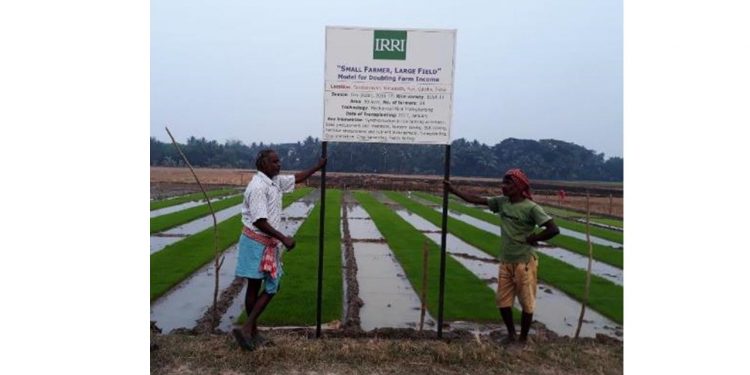A notable inclusion in the UPSC 2023 exam is the Small Farmers’ Large Fields (SFLF) model, which is gaining attention as a pioneering initiative in participatory farming. Developed by Dr. Sampriti Baruah based on her extensive research at the University of the Philippines Los Baños and the International Rice Research Institute (IRRI), the SFLF model aims to improve the productivity and sustainability of smallholder farmers.
What is the SFLF model?
The SFLF model is designed to overcome the constraints faced by small farmers by consolidating their lands into larger cooperative fields. This participatory approach allows for better resource management, increased bargaining power over inputs and products, and adoption of better agricultural practices. By sharing resources and knowledge, farmers can achieve economies of scale, leading to increased yields and incomes.
Success stories from Indian states Odisha:
In Odisha, the SFLF model has significantly increased rice yields. Farmers reported increases in yields of up to 30% due to optimized input use and participatory management practices. The model also promoted the adoption of high-yielding varieties and sustainable farming practices, reducing dependence on chemicals.
Assam:
Potato farmers in Assam have benefited from the SFLF model through improved access to quality seeds and inputs. Collective action has enabled bulk purchasing, cost reduction and timely availability of essential agricultural inputs. As a result, potato yields increased by an average of 25%, and farmers gained better access to markets and pricing.
Bihar:
In Bihar, the impact of the SFLF model was evident in both rice and potato cultivation. The consolidation of fields allowed for mechanization, which was previously unaffordable for individual farmers. The use of modern equipment has increased efficiency, reduced labor costs and increased overall productivity.
Contribution and collaboration
The successful implementation of the SFLF model owes much to the collaborative efforts of various institutions and individuals. Notably, the International Rice Research Institute (IRRI) and the International Potato Center (CIP) played a critical role in providing technical support and research information. Key participants included Bidhan Mohapatra, Ranjan Kumar Sahu, Dr. Murali SN, Brijesh Kumar, Debasis Samantaray, Dr. Shahid Ali and Manish Kakralia, whose efforts were instrumental in piloting the model in different states.
The SFLF model is a testament to the power of collective action in agriculture. By allowing smallholder farmers to pool resources and expertise, it addresses critical issues such as low productivity, high production costs and limited access to markets. The success of the model in Indian states such as Odisha, Assam and Bihar highlights its potential for wider application and scalability. As we move towards more sustainable and inclusive farming practices, the SFLF model offers a promising blueprint for empowering smallholder farmers and achieving food security.








